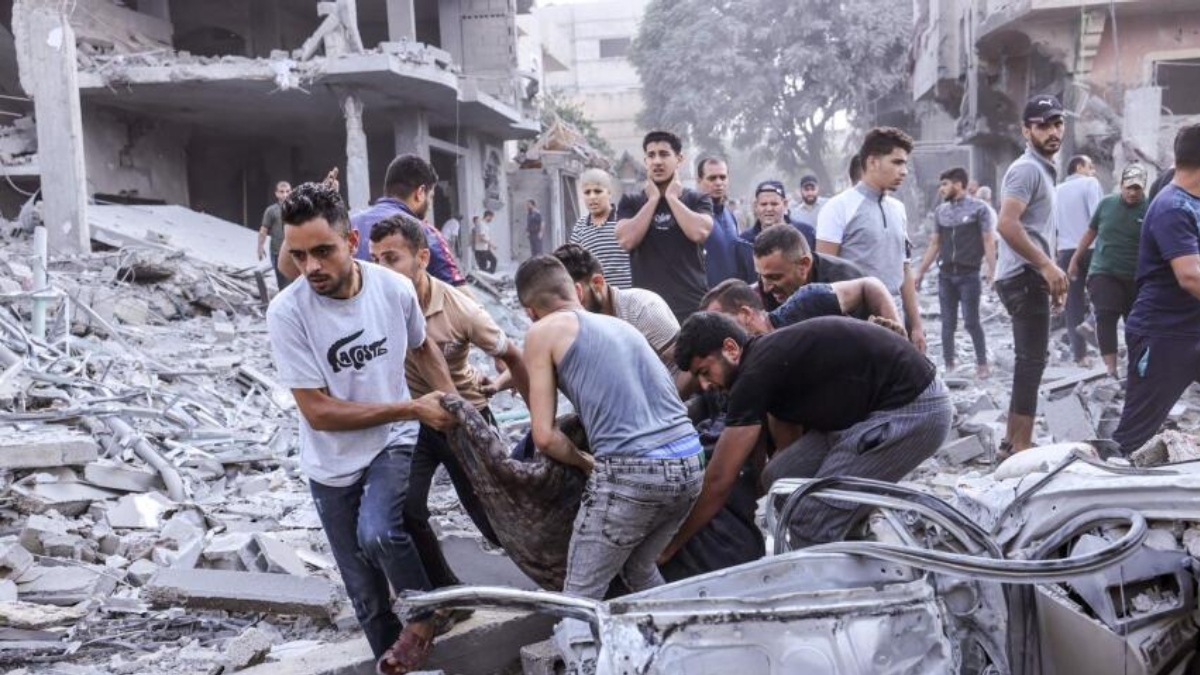An Israeli airstrike struck al-Ahli Hospital in Gaza City on Tuesday, resulting in the tragic deaths of at least 500 people, according to the Gaza Health Ministry. The attack, which saw one of the largest death tolls in recent conflicts, targeted a hospital where wounded Palestinians and others had taken refuge in hopes of safety.
Pictures from the site revealed heart-wrenching scenes of fire consuming the hospital corridors, shattered glass, and remains scattered in the vicinity.
Several hospitals in Gaza have been functioning as shelters for many, especially after the evacuation orders issued by Israel for residents of Gaza City and its neighboring areas. These residents were instructed to move to the southern part of the Gaza Strip, anticipating their safety there.
Rear Adm. Daniel Hagari, the Israeli military spokesperson, mentioned that details regarding the hospital airstrike were still under investigation and could not yet confirm if it was an Israeli-led action.
Meanwhile, other areas in Gaza, such as Rafah and Khan Younis, have also been subject to fierce strikes. Residents reported numerous casualties, with the Associated Press witnessing approximately 50 bodies being taken to Nasser Hospital in Khan Younis.
Furthermore, a home in Deir al Balah was obliterated by an airstrike, leading to the unfortunate deaths of 12 individuals. Without prior warnings, many of these strikes have caught civilians off-guard. In another devastating event, a UN school sheltering 4,000 Palestinians in central Gaza was hit by Israeli tank shelling, killing six and wounding several.
Despite the mounting casualties, the Israeli military maintained that its strikes target Hamas infrastructure and command centers. Ayman Nofal, a top Hamas military commander, was killed in a strike in the Bureij refugee camp.
Israeli Prime Minister Netanyahu placed the onus on Hamas for the retaliatory attacks and the rising civilian casualties, citing their strategy of using civilians as shields.
Furthermore, an Israeli airstrike targeted the residence of Hamas’ chief political official, Ismail Haniyeh, resulting in 14 casualties.
The latest series of hostilities began after a Hamas attack on southern Israel on October 7, which led to over 1,400 deaths, mostly civilians. In retaliation, Israeli strikes have killed at least 2,778 individuals, with children making up nearly two-thirds of the death toll.
A humanitarian crisis is unfolding, with over a million Palestinians displaced and essential resources like water and electricity dwindling. The UN has indicated that a large portion of Gaza’s populace is now crammed into a small southern area.
Efforts for relief are ongoing but face challenges at border crossings, such as Rafah, where supplies and aid are waiting to enter Gaza.
US Secretary of State Blinken recently visited the region, emphasizing the urgent need for humanitarian assistance, while President Biden’s forthcoming trip signals US support and an attempt to alleviate the escalating tensions.
The repercussions of the conflict extend beyond Gaza, as Israel has evacuated towns close to its northern frontier with Lebanon due to exchanges with Hezbollah militants. The broader region remains on edge, with Iran’s Supreme Leader, Ayatollah Ali Khamenei, urging an immediate halt to the bombardments, cautioning of potential violent repercussions throughout the Middle East.





